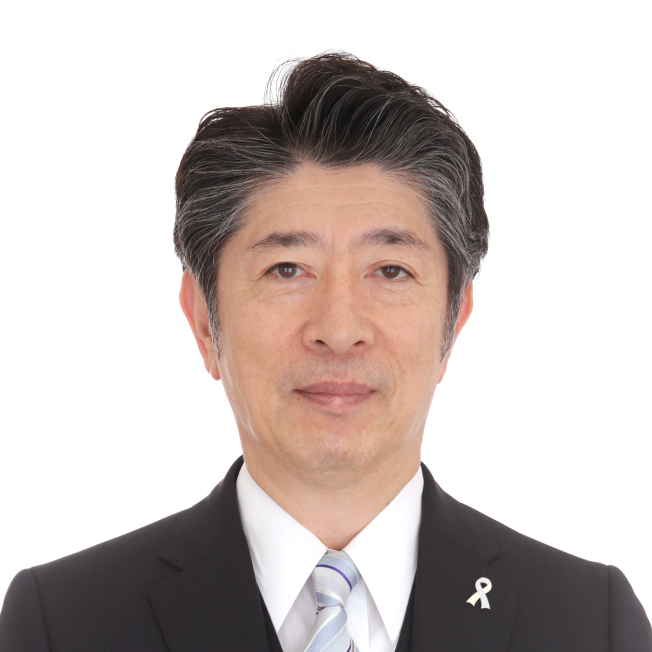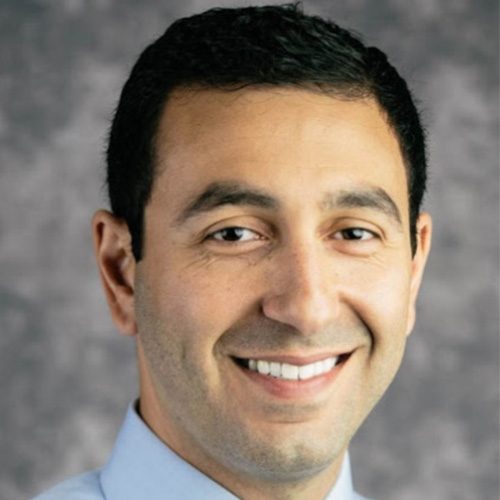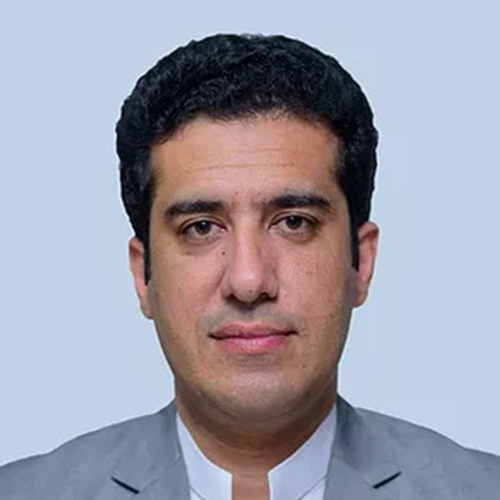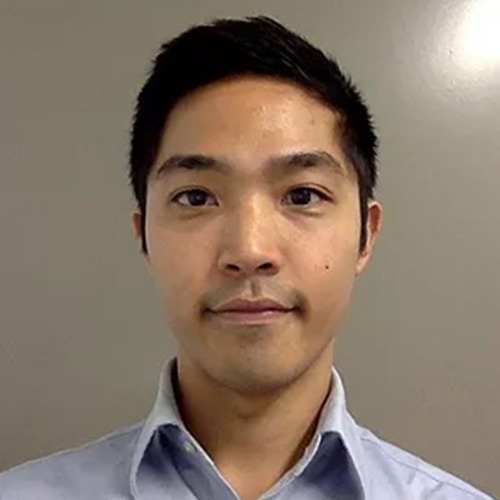
Education&ScienceWebinars
Respiratory Infections (Non-Tuberculous) Assembly Symposium
Tuesday 10 November 2020
- 12:00-13:45 (UTC+9)
This webinar has ended.

Chairs

Dr Yuanlin Song
Assembly Head

Dr Chieh-Liang Wu
Assembly Head-Elect

Dr Masaki Fujita
Assembly Deputy Head
Programme

Dr Yoichi Nakanishi
Introduction
by Dr Yoichi Nakanishi
APSR President

Dr Tufik Assad
Achieving Better Diagnoses and Outcomes for Patients with Respiratory Infections, With or Without a Pandemic
the AVM’s main presentation, by Dr Tufik Assad, Medical Director Critical Care Unit, Williamson Medical Center, Franklin, USA

Dr Catherine Jordan
Comparison of CRB-65 and Quick Sequential Organ Failure Assessment (QSOFA) in Predicting Intensive Care Unit (ICU) Admission and Mortality of Adult Patients with Community Acquired Pneumonia (CAP)
St. Luke’s Medical Center, Manila, Philippines
Winner of the Gold Award for this symposium

Dr Muhammad ImranJordan
Prevalence of COVID-19 in asymptomatic healthy residents of border quarantine facilities in district Khyber, Khyber Pakhtunkhwa, Pakistan
Institute of Hepatology, COVID-19 Hospital, Nishterabad, Peshawar, Pakistan
Winner of a Silver Award for this symposium

Dr Aniket Inamdar
Correlation of Chest CT score with baseline SpO2 on room air and laboratory findings in COVID-19 patients
Samarpan Clinic, Omerga, India, India
Winner of a Silver Award for this symposium

Dr Matthew Ing
Management of thoracic empyema in an Australian tertiary referral hospital: A 36-month retrospective study
Department of Respiratory and Sleep Medicine, St George Hospital, Sydney, Australia

Dr Santony
The effect of pulmonary rehabilitation toward duration of hospitalization, il-6 levels, respiratory muscle power in hospitalized community pneumonia patients
Department of Respiratory and Sleep Pekanbaru, Brawijaya University, Indonesia

Summary
by the APSR Respiratory Infections (Non-Tuberculous) Assembly leadersDr Yuanlin Song, Assembly Head
Dr Chieh-Liang Wu, Assembly Head-Elect
Dr Masaki Fujita, Assembly Deputy Head
Questions for panelists and their responses
The sample for biofilm, can we use sputum, blood or BAL? which sample will have hihgest dx yield?
Dr Tufik Assad responds:
The BioFire pneumonia panel can be run on expectorated sputum, endotracheal aspirate, and BAL (not blood). The highest diagnostic yield is found in endotracheal aspirate (direct lower respiratory tract specimen, without potential for upper airway contamination), followed closely by a good expectorated sputum sample. BAL tends to have the lowest yield, as the respiratory secretions are diluted with saline in order to obtain the specimen.
Does repeating BioFire in time gap increases sensitivity?
Dr Tufik Assad responds:
In cases where suspicion for infection is high, and the first test is negative, I think that repeating testing certainly increases yield.
How do you use the “CTX-M” marker? MRSA seems very straight forward, but I’d like to hear your experience/insights on ESBL and carbapenem use.
Dr Tufik Assad responds:
CTX-M is the most common gene seen in ESBL gram negative rods. I use it the same way that I use the mecA/C and MREJ genes. If a patient has a positive GNR (lets say Klebsiella pneumoniae) and a positive CTX-M gene, I’d suspect an ESBL infection and start antibiotics appropriately. This would eventually be confirmed on sputum culture if ordered.
How BioFire excludes contamination?
Dr Tufik Assad responds:
BioFire attempts to exclude contamination and airway colonization by a hard threshold (10^3.5 copies/ml in the bacterial pathogens for the pneumonia panel), as well as the quantitative bins (10^4, 10^5, 10^6, >10^7 copies/ml). The higher the bin value, the less likely the bacterial pathogen is a contaminant.
ⅰ. What about the sub-clinical infection of COVID-19?
ⅱ. Do sub-clinical infection confer any immunity?
Dr Tufik Assad responds:
ⅰ. The BioFire panel is very sensitive, so as to detect even subclinical COVID-19 infections.
ⅱ. This is an active area of debate. There have been very few cases of re-infection, however many patients with mild symptoms lose their antibody response after several months.
ⅰ. What is the importance of pinpoint microbial diagnosis of COVID 19 in healthy exposed POLICE officers of a densely populated southeast Asian country?
ⅱ. Is there any role of Incremental Shuttle Walk test in management of post Covid 19 lung fibrosis?
ⅲ. What is the best suitable & quickest method of sterilization of mechanical ventilator during Covid 19 pandemic situation in a tertiary care facility?
Dr Tufik Assad responds:
ⅰ. The decision on what ways to test exposed individuals, including police officers, varies. If you have ample staff, then you may not need routine testing of exposed individuals but may allow them to quarantine following exposure. If you have limited staff, then you may need to consider a testing protocol, assuming you wait ample time following the exposure prior to bring them back to work.
ⅱ. The role of pulmonary rehabilitation, or any other management, following pulmonary fibrosis caused by COVID-19 remains unclear. I suspect that all treatments useful for other chronic lung diseases, such as the incremental shuttle walk test, would also be useful in this illness.
ⅲ. I apologize, but I don’t believe I’m qualified to answer this question.
Should we retrain our healthcare providers at all levels of care about quick assesment and triage for timely intervention at all Respiratory infections.
Dr Tufik Assad responds:
I think, given that we are in a global pandemic with a respiratory infection, it is prudent for all key clinical staff to feel comfortable triaging patients with respiratory infections.
Is Ct Value applicable for marker prognosis in Covid 19 patient management?
Dr Tufik Assad responds:
The CT (or cycle threshold) value is a measure of viral load. It is neither routinely reported nor used to make management decisions in COVID-19. Some studies have suggested a correlation with disease severity, but I don’t believe there is a role to change management.
What is apropriate strategy regarding secondary infection and Antibiotic use among covid-19?
Dr Tufik Assad responds:
There is no clear answer to this question. I would suggest maintaining a high index of suspicion, and considering bacterial infection in all patients with COVID-19 with a change in sputum production, new fevers, worsening infiltrates/oxygenation. Empiric antibiotic use comes with risks, so I suggest testing as often as you have a clinical suspicion with culture and/or the BioFire panel if available.
What is the typical features of Non tuberculosis infection? The investigation? Do you have cases coexisted with COVID 19?
Dr Tufik Assad responds:
I’m not sure what is meant by “non-tubercolosis infection” or what is meant by “the investigation”. Non-tuberculous mycobacterial (NTM) infection? Or all non-tubercolosis infections? The features of respiratory infections IN GENERAL are fevers, chills, cough, fatigue, etc. NTM infections tend to have similar symptoms, although present more insidiously. Weight loss is also more common. We have seem many cases of bacterial co-infections with COVID-19, and I have heard of reports of fungal co-infection (particilarly aspergillus infections). I have neither seen nor heard of NTM co-infections with COVID-19.
Thank you for the presentation dr.Jordan. I’d like to ask, why did you not use ureum as part of CURB-65?
Dr Catherine Jordan responds:
We did not use BUN as a parameter because we opted to assess parameters which did not require laboratory testing since results of tests can take some time to be available.
Did you test the efficacy of PSI as prognostic performance?
Dr Catherine Jordan responds:
We did not test the efficacy of PSI in our study since it assesses several different parameters including demographic factors, comorbidities, physical examination findings and a number of laboratory and imaging findings. These can take some time to assess particularly the turn-around-time of the laboratory and imaging results. Our study aims to compare severity scoring systems which are easily utilized and do not require laboratory examination since we will be using this as aid in determining site-of-care and mortality risk at the ER level, hence PSI was not tested.
Can Immunomodulators be a fruitful addition to O2, Antibiotics, Corticosteroids & Nonpharmaceutical interventions in prevention of Sepsis and of mortality in CAP.
Dr Catherine Jordan responds:
To date, there has been no consensus regarding the role of immunomodulator in prevention of sepsis and mortality in CAP. Despite knowing that immunomodulation can affect cytokine production leading to reduced proinflammatory mediators, increased anti-inflammatory mediators and even neutralization of cytokines, its use should still be individualized among patients depending on the current and even pre-existing immune status of patients. Effects of immunomodulator use among CAP patients still require further studies including prospective since benefits of its use among CAP in terms of prevention and even mortality reduction are still not yet established.
Do you have recommended preventive measures based on your setting r these population.
Dr Muhammad Imran responds:
Yes. We have recommended authorities for proper implementation of SOPs. Also we have asked authorities to extend screening services to the population at risk.
How and when did you check the symptoms and signs among those quantined traveles? What are the criteria of symptomatic and asymtomatic? It possible that the travelers under-reported the symptoms and signs?
Dr Muhammad Imran responds:
The signs and symptoms were checked daily via both subjective and objective assessment. Anyone having acute onset fever, cough, shortness of breath, rhinitis, sore throat, diarrhea and nausea were termed symptomatic. We tried our level best to decrease the chances of under reporting by both subjective and subjective assessment and filling of preset questionnaires.
How did you define the risky occupation? Did these patients have the symptom losing sensation of smelling?
Dr Muhammad Imran responds:
The risky professions were defined on account of their mobility, interaction with people and staying outside of their homes in groups, such as Taxi and truck drivers. they also have high interaction with patients, whom they transport from border area to different hospitals in Pakistan. therefore the risk of getting infected with covid-19 and subsequently transmitting the disease was high. The patients might have reported loss of smell but we haven’t recorded it in our questionnaire.
Is identification of healthy asymptomatic COVID-19 in Quarantine is of less importance in inmates of the facility?
Dr Muhammad Imran responds:
Identification of asymptomatic individuals was an important finding as the symptomatic ones. It’s basically the main aim of our study. In our study 79% of the positive individuals remained asymptomatic throughout the disease period. These individuals when involved in professions like Taxi and Truck driving would spread the disease to others. As in our study the odds of getting infected is 4.08 times when you are a driver as compared to non-drivers. An effective intervention would have focused on not only quarantining these populations but also addressing the needs and challenges of this population which could benefit the overall country’s population by minimizing the COVID-19 spread.
Does the P/F ration correlates to the CT severity in this group of patients?
Dr Aniket Inamdar responds:
Unfortunately we could not do arterial blood gas (ABG) for all patients in our study.So I cant exactly tell whether P/F ratio correlates with CT severity in our pateints.
Baseline SpO2 on roomair is highly variable so also the CT Chest Score at individual levels?
Dr Aniket Inamdar responds:
Yes its true. We considered SpO2 on room air and CT chest done at the time of admission only for this correlation.
Have you ever used urokinase for complicated efffusion? In Japan, urokinase is more frequently used than tPA/DNAse.
Dr Matthew Ing responds:
Urokinase is not widely used in Australia to treat thoracic empyema. This is likely due to the strong evidence of the MIST 2 trial that supports recommendations of TPA/DNASE
Growing evidence support the urokinase as an alternative to TPA/ DNASE (Bédat B, Plojoux J, Noel J, et al. Comparison of intrapleural use of urokinase and tissue plasminogen activator/DNAse in pleural infection. ERJ Open Research 2019; 5: 00084-2019 [https:// doi.org/10.1183/23120541.00084-2019].)
The conclusion of the trial demonstrated urokinase is safer and equally effective when compared with treatment with t-PA/DNAse.
Does tPA/DNase induce bleeding in the thoracic cavity?
Dr Matthew Ing responds:
The answer to that question is yes. The major concern surrounds the drug TPA that lyses pleural adhesions by activation of plasmin, aiding drainage of the effusion by breaking down fibrinous septations. The greatest fear is iatrogenic severe bleeding secondary to pleural haemorrhage
Significant pleural bleeding is rare.
Intrapleural administration of tPA 10 mg has caused pleural bleeding reported at rates between 1.8 and 12%
What are the local hurdles for using tPA DNase?
Dr Matthew Ing responds:
The major limitation is cost of the drugs, which need to be funded through individual or hospital sources. There has been recent literature on dose de-escalation that may mitigate the high cost of these drugs.
Secondly you need to have combination of doctors and nurses that are familiar the administration of the drug and common complications that can occur. This requires time for education and training.
In case of TB empyema, Anti TB how long?
Dr Matthew Ing responds:
Unfortunately we excluded patients with TB empyema from our study and cannot comment on the success or duration of therapy in those with TB related empyema.
Currently the evidence of TPA/Dnase administration is limited in this patient population
when did you decide treatment failure
Dr Matthew Ing responds:
Failure of conservative medical treatment is defined as worsening infection combined with residual pleural collection. This occurs in approximately 20%‐30% of all cases.
Rehabilitation could facilitate the recovery of pneumonia patients, what is the possible mechanism?
Dr Santony responds:
ⅰ. As we know in pneumonia, there is inflammation of the lung parenchyma and the effect will be a lot of sputum production. Chest physiotherapy will help cough effectively, efficiently remove mucous phlegm, increase mucociliary clearance and also reduce airway resistance, so that gas exchange in the lungs will also be better and help facilitate the recovery process of pneumonia patients.
ⅱ. The second mechanism of pulmonary rehabilitation can facilitate to improve the strength of the respiratory muscles so hopefully could accelerate the improvement of clinical conditions, improvement of oxygen consumption and shortness of breath and also increase the endurance of the respiratory muscles, it will help provide better recovery process from pneumonia patients
How did the IL6 level correlate or help the pulmo rehab among your pts.
Dr Santony responds:
Pneumonia patients undergoing pulmonary rehabilitation are expected to have clinical improvement more quickly than those in control patients, so that the hope is that IL-6 levels will decrease faster than the control group. The conclusion is that there is an indirect relationship between pulmonary rehabilitation and IL-6 levels, IL-6 levels will decrease faster on day 5 in treatment group patients than control group.





